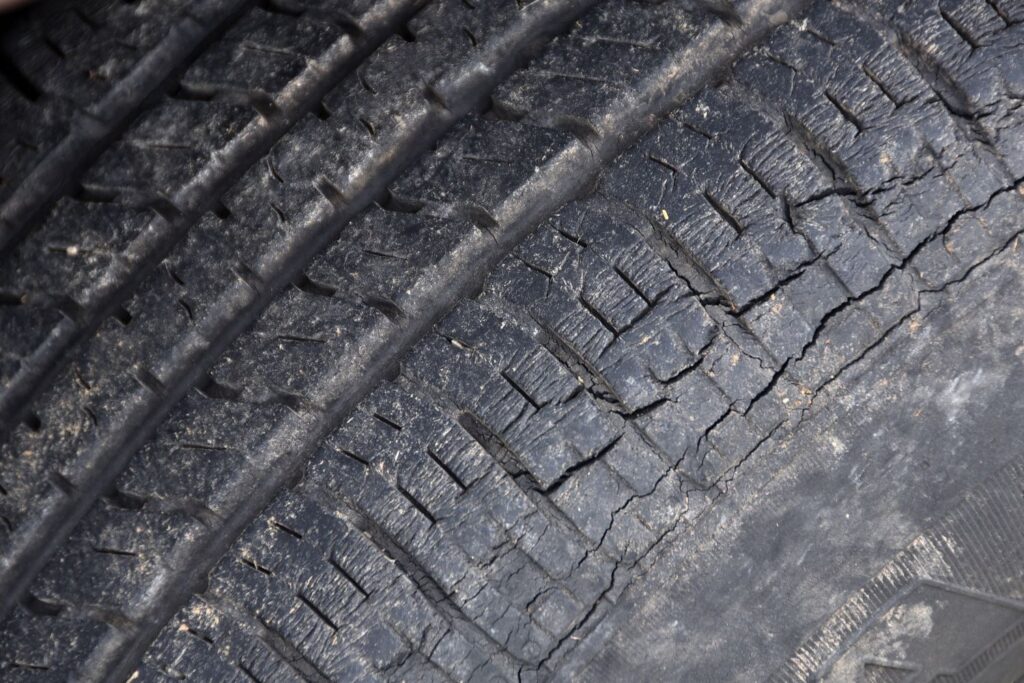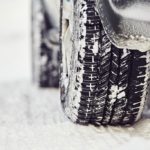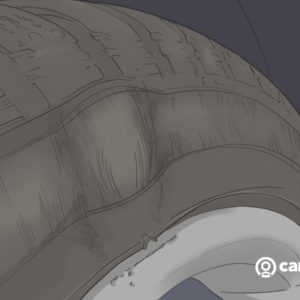Tires wear out over time. The average tire on the market is designed to last 50,000 miles, but some are designed to last up to 80,000 miles. While mileage can determine tire replacement intervals, a general consensus also exists in the car community that tires must at least be inspected after six years and must absolutely be replaced after 10 years, regardless of how much tread is left.
Accurately determining your tires’ remaining lifespan can be challenging, especially if you purchased a used vehicle and don’t know when the tires were last replaced. There are several visual indicators that can help you determine your tires’ remaining lifespan, including tire wear, tread depth, and the presence of punctures and damage. One of these indicators is the presence of dry rot, which is also called sidewall cracks.
What Is Dry Rot?
Dry rot is characterized by small, visible cracks that appear on the side of a tire. Over time, they can grow from the side and extend to the tread. Tire color can also change from black to ash gray. This happens because the rubber has lost its flexibility and become more brittle. This is a major concern because a tire that isn’t flexible anymore will be at a greater risk of failing and suffering a blowout. Blowouts are when tires burst and deflate rapidly, typically at high speed when they’re experiencing the most stress.

What Causes Dry Rot?
Ultraviolet rays and oxygen cause the oils and compounds in the rubber composite to evaporate or degrade. Temperature fluctuations can also accelerate tire degradation. Tires that are left unused for extended periods of time are also prone to degradation. The wax used to prevent oxidation in tires only contacts the tire’s surface when the vehicle is being driven. The surface rubber doesn’t benefit from this shielding wax when tires are not being used.

When to Replace Dry Rot Tires
Tires with dry rot should be considered damaged beyond repair and should be replaced immediately.
Should you replace tires with dry rot even when they have a lot of tire tread left? Yes, absolutely. Dry rot lets air out of the tires, possibly preventing them from being properly inflated. Dry rot can also cause abnormal rubber expansion when driving, which can cause tires to split apart. Dry rotted tires are far more likely to develop leaks, holes, and blowouts. In extreme circumstances, the tread can completely separate from the rest of the tire.
How to Prevent Dry Rot
Since tires with dry rot can’t be restored, it is critical to prevent it before it has a chance to set in. Keep your tires away from extreme temperatures, exposure to direct sunlight and UV rays (when you’re not driving), as well as abrasive or corrosive chemicals, which can be present in motor oil and industrial cleaning products. You should also use your vehicle regularly because leaving your car unused can cause dry rot to set in. Lastly, you should always properly inflate your tires, especially if you frequently use your vehicle.
Regularly inspect your tires for dry rot and replace them if it’s present. Small cracks forming on your tire might seem like a minor issue, but they should be treated as a major risk. So the next time you ask “When to replace tires with dry rot?” The answer should be as soon as you can.
Any information provided on this Website is for informational purposes only and is not intended to replace consultation with a professional mechanic. The accuracy and timeliness of the information may change from the time of publication.






























